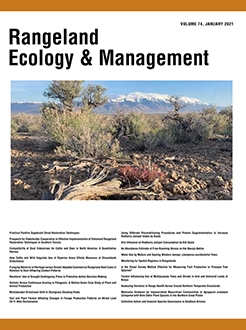Multipurpose trees and shrubs are vital components of arid and semiarid ecosystems. They offer both regulatory and production services, yet there is inadequate information on their actual use and factors affecting utilization of these plant resources. A study was carried out in three agroecological zones (counties) of southeastern Kenya: Machakos (subhumid zone), Kajiado (semiarid zone), and Kitui (arid zone). The research objective was to assess the local uses of multipurpose trees and shrubs and determine how socioeconomic factors (gender, type of occupation, and education level) influenced their use. A field survey was conducted along a 324-km transect across the three agroecological zones. Data were collected from 196 respondents using focus group discussions, key informants, and individual household questionnaires. A total of 86 plant species belonging to 47 plant families were recorded. The Mann-Whitney U-test revealed that women significantly used a higher number of different plant species than men (P < 0.05). The level of education and type of occupation also significantly affected plant use (P < 0.05), with subsistence farmers having primary or no formal education, reporting the highest number of species. Fifteen plant-use categories comprising production and service provision were identified. Plant species use-value index (UVI) revealed 10 indigenous and wild woody species of high value in the study area. Acacia tortilis (Forssk.) Hayne had the highest UVI of 0.33, followed by Commiphora africana (A. Rich.) Engl. (0.17), Terminalia brownii Fres. (0.13), and Zanthoxylum chalybeum Engl. (0.12). There was a significant positive correlation between the reporting frequency for woody species and the overall UVI (P < 0.05). Economic development, climate change, and land use changes jeopardize distribution, utilization, and knowledge preservation of multipurpose woody species. There is a need for monitoring and adoption of gender-sensitive strategies for their sustainable utilization in order to safeguard these unique plant resources from degradation and overexploitation.
How to translate text using browser tools
4 January 2021
Factors Influencing Use of Multipurpose Trees and Shrubs in Arid and Semiarid Lands of Kenya
Patrick D. Kisangau,
Jacinta M. Kimiti,
Mary W.K. Mburu,
Denyse J. Snelder
ACCESS THE FULL ARTICLE
Africa
Agroforestry
livelihoods
sustainable utilization
Use-value index





